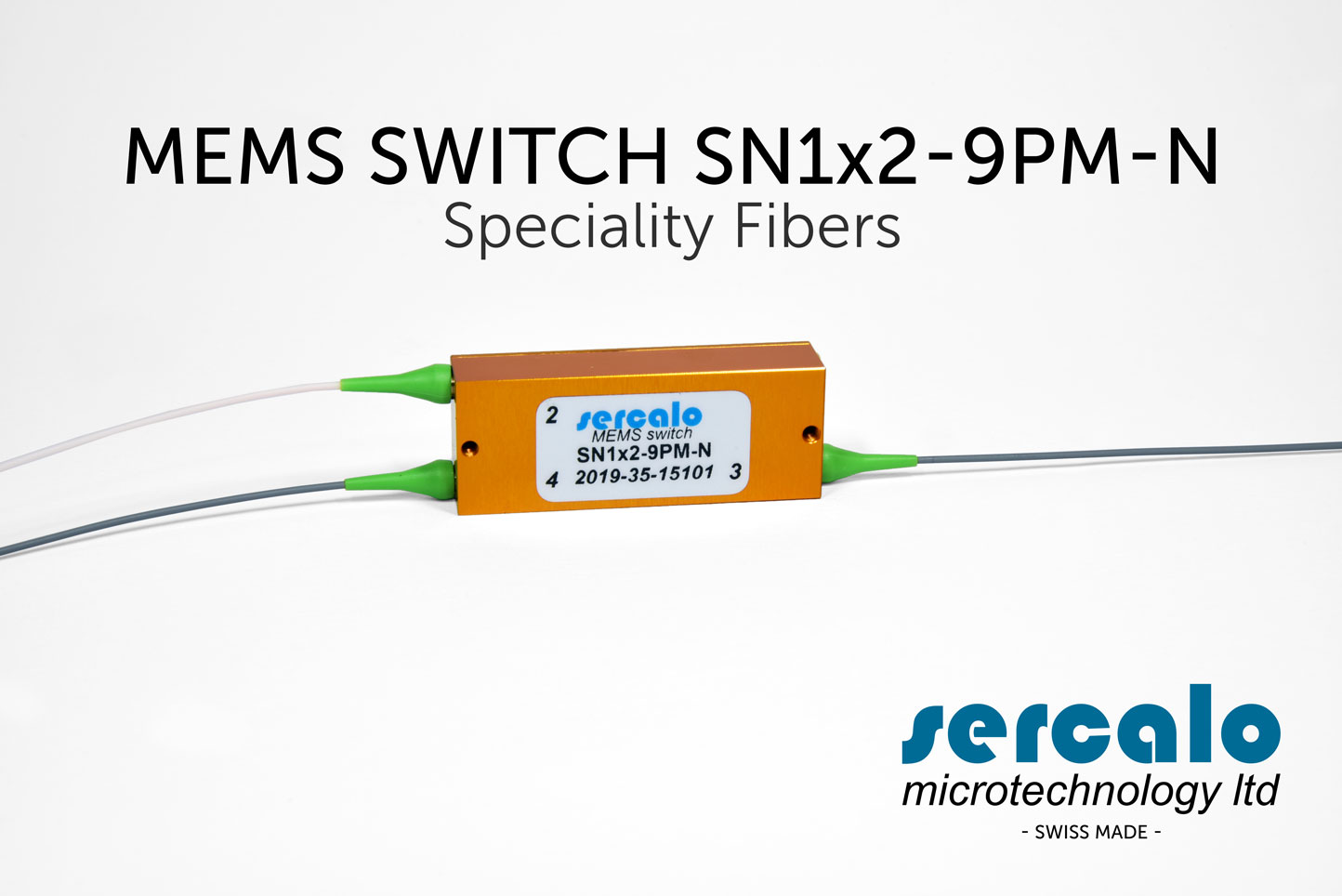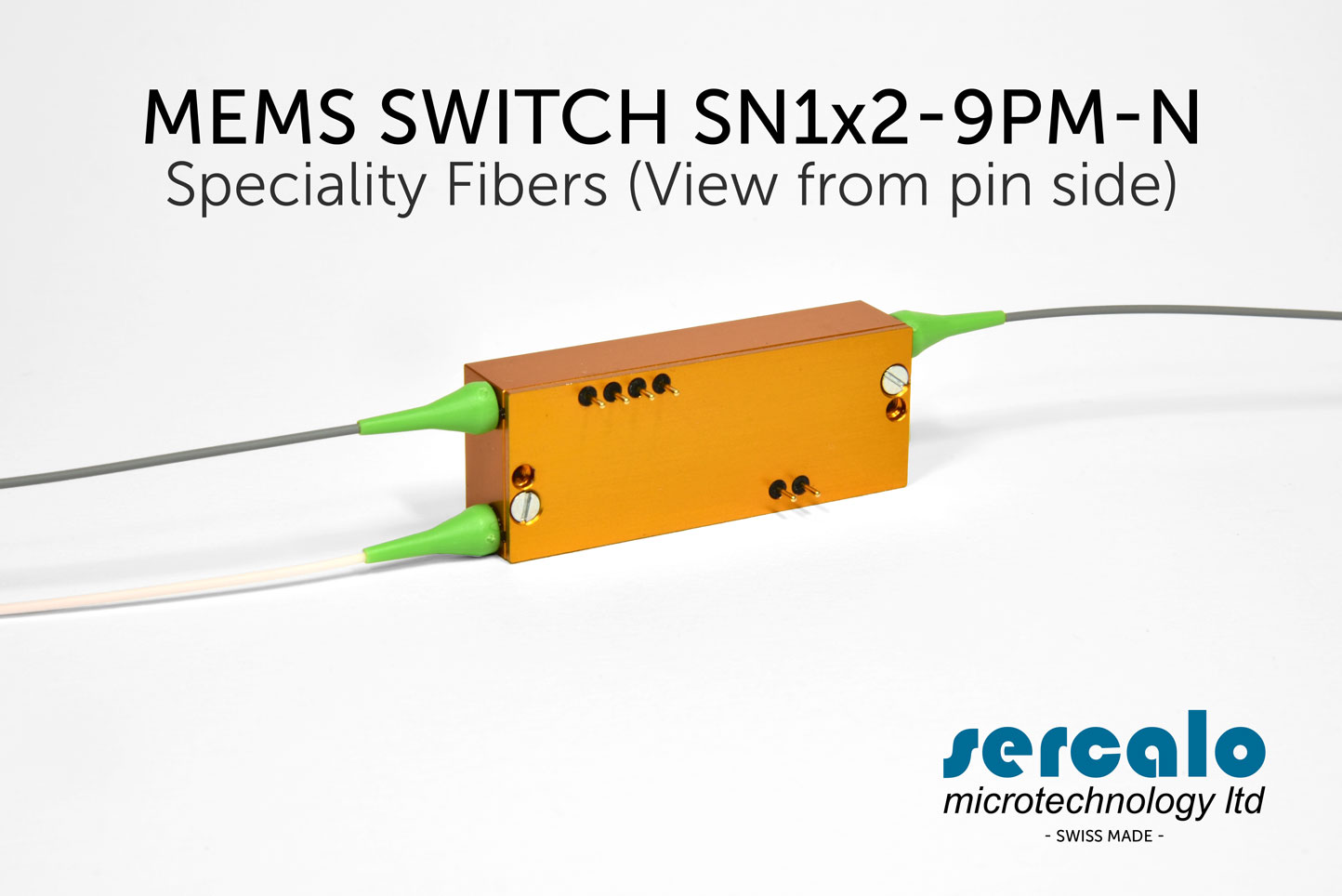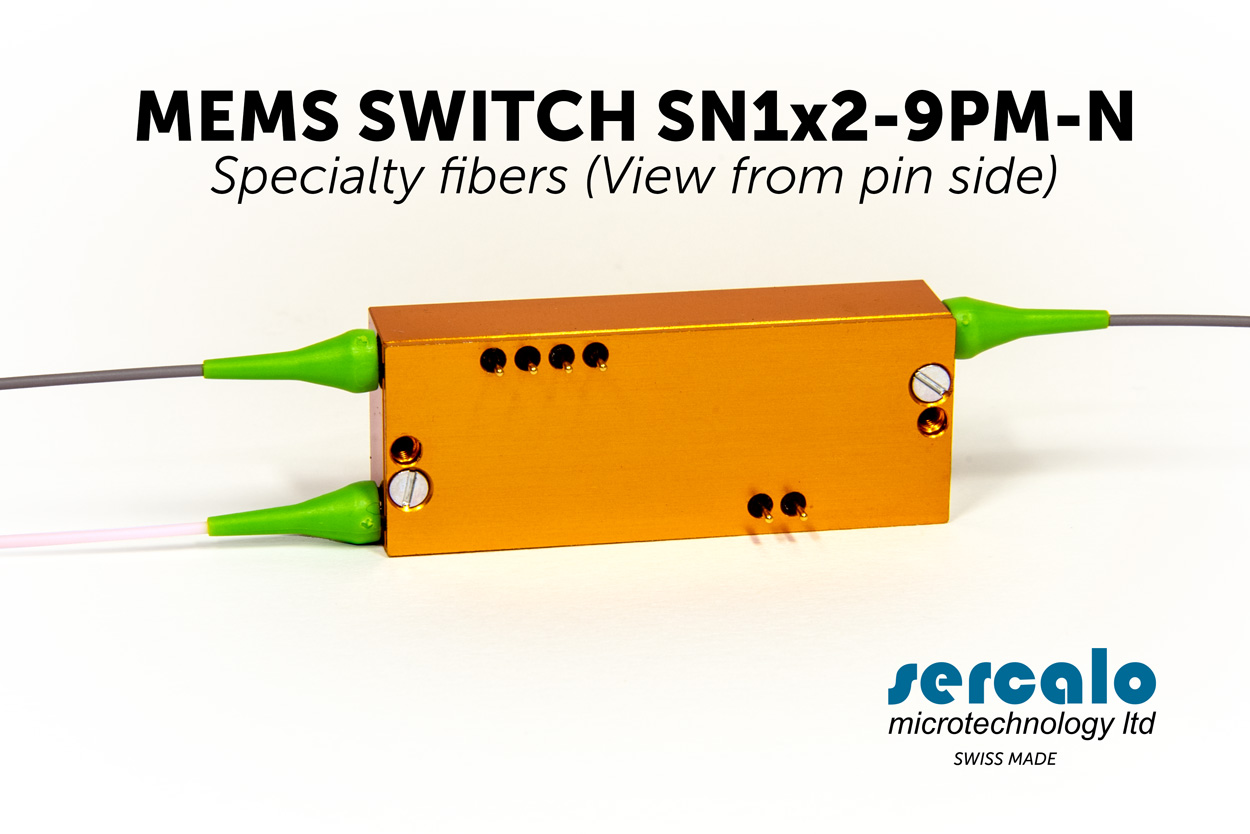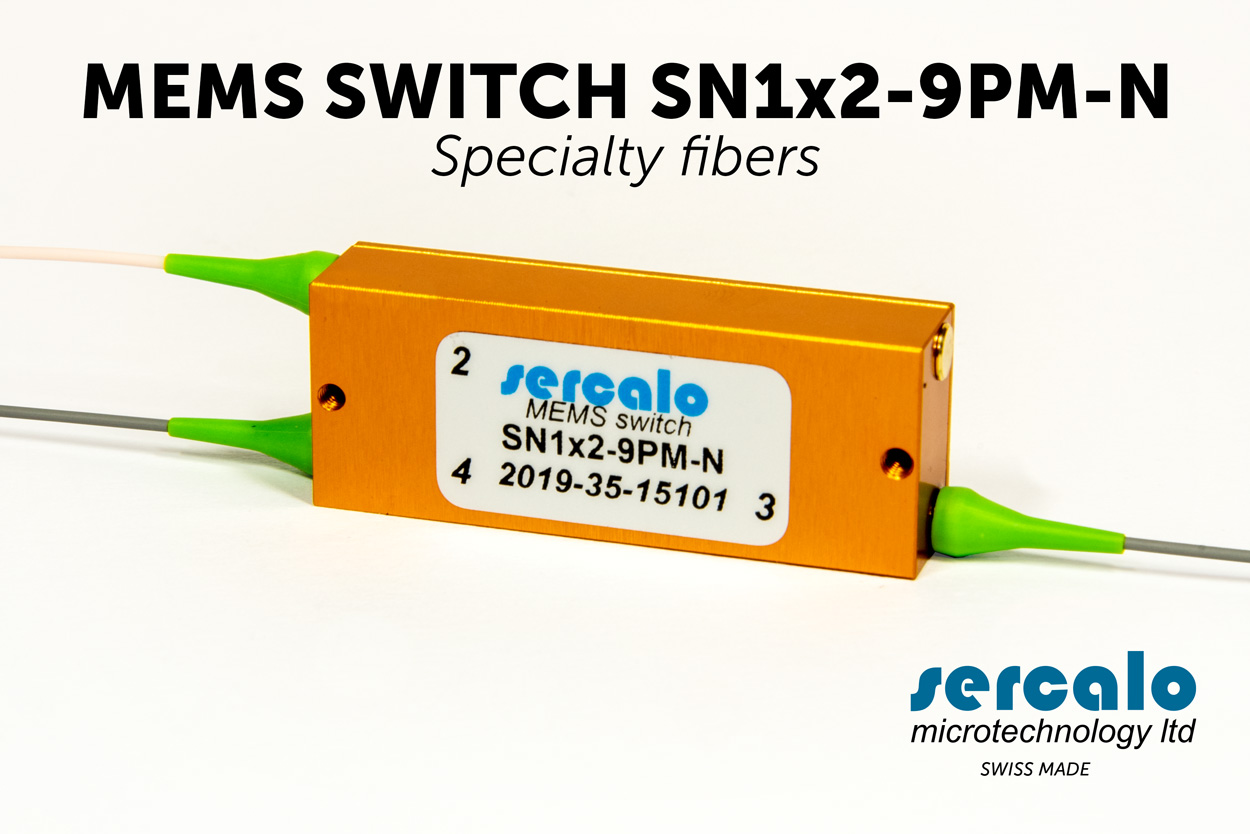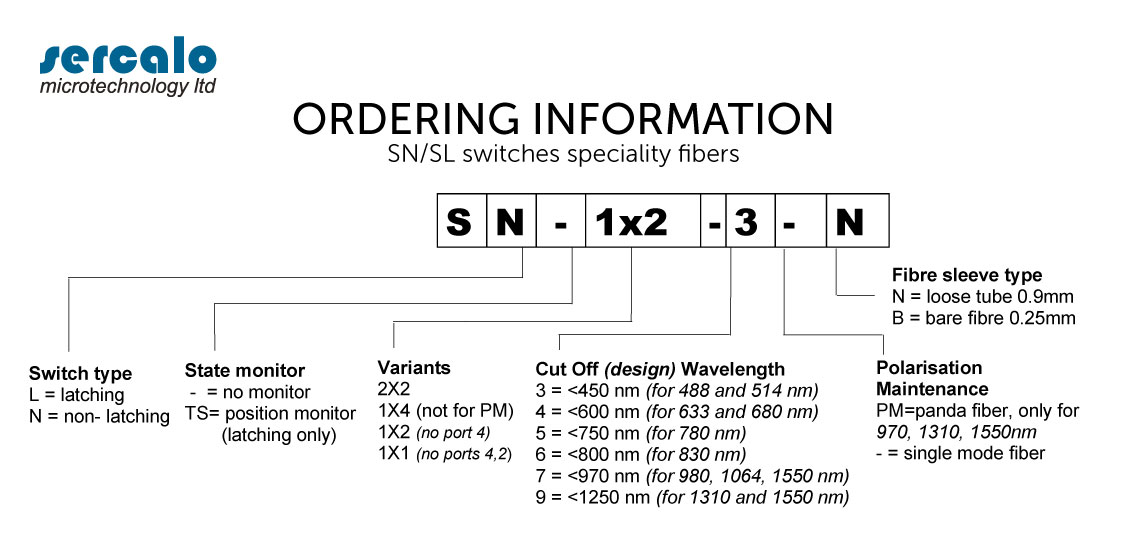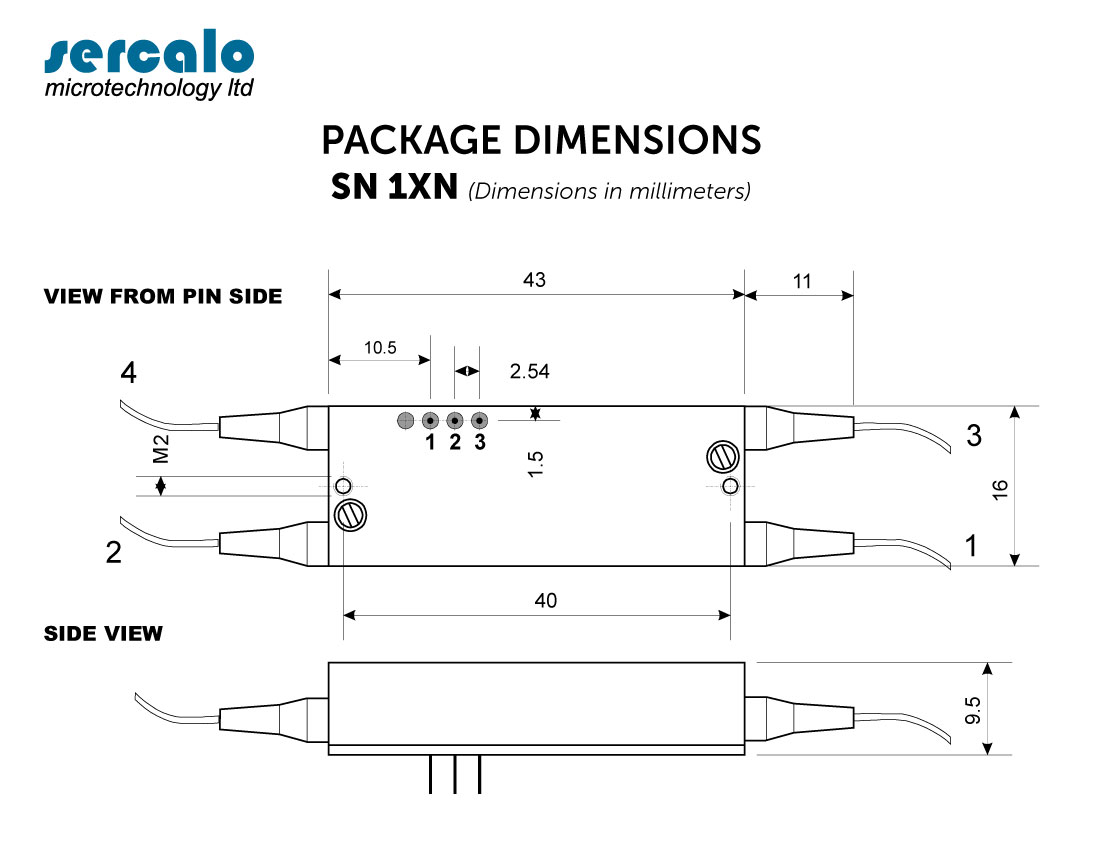OVERVIEW
The Sercalo MEMS Switches SN series are opto-mechanical switches for the most demanding applications in fiber optic sensor systems and instrumentation.
The switch is available in 1x1, 1x2, 2x2 and 1x4 variants. The switch mechanism is available in either latching or non latching variants and has a very fast response time below 1 ms and below 1.5 dB insertion loss. The single mode switch is available for a number of specialties fibers covering design wavelengths such as 488 nm, 515 nm, 633 nm, 680 nm, 780 nm, 830 nm, 980 nm and 1064 nm. The 1x2 and 2x2 variants can also be made with polarisation maintaining PANDA fibers.
The miniature package withstands rugged environments and is well suited for direct mounting on printed circuit boards. The switch is qualified according to Telcordia GR 1221.
DESCRIPTION
The Sercalo MEMS switches are composed of an optical subsystem and an electrical driver interface. The optical switching function is realized by a silicon MEMS chip. In the latching SL variants, a bistable suspension mechanism keeps the last selected state in power off. In the non-latching SN variants, the switch returns into the bar state when electrical power is removed.
To operate the switch 5V and 0V are applied on the supply pins, which are used by the internal DC-DC converter to supply a high voltage for the actuator control. CMOS or TTL logic levels on the control pins switch the high voltage on the electrostatic actuator. To set the switch state in the latching variant, pin 2 respectively pin 3 are set to logic high (5V) for 10 ms and the corresponding switch state is selected. At rest pins 3 and 4 should be pulled to 0 V and must not be floating.
In the non-latching variant only pin 2 is used to set the state of the switch. To set the cross-state pin 3 must be at logic high. When pin 3 goes to logic low, or at power off, the switch returns into the bar state.

